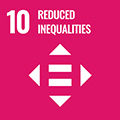- Docente: Vincenzo Lavenia
- Credits: 12
- SSD: M-STO/02
- Language: Italian
- Teaching Mode: Traditional lectures
- Campus: Bologna
- Corso: First cycle degree programme (L) in History (cod. 0962)
Learning outcomes
By the end of the course students will know the early modern era from a broad perspective, including historiographical issues deriving from a non-Eurocentric approach, the major fault-lines in global relations, the most significant events in the history of empires and the complex causes of migratory phenomena. Taking an active part in lessons, students will learn to decipher the connections, hang-overs and social, environmental, cultural and religious transformations of the early modern world and have a critical grasp of the questions prompting research on early globalization with its lasting impact on the style of contemporary conflicts and on today's society. The lively learning environment involves analysis of facts, interpretation of models and sources, and links to the geographic and social sciences. Students will acquire a critical methodological approach and apply theoretical models of interpretation to social and institutional processes, identifying the relevant sources.
Course contents
The course will address the recent debate on world history; it will outline the history of non-European political formations during the early modern age; it will explain how colonial empires were formed, how they were legitimized, how areas of the world were connected, the origins of modern slave trade, the economic system that is created after the fifteenth century, the role of commercial diasporas, the religious and cultural effects of European expansion, Western interpretations of the non-European world.
These are the topics that will be dealt with during the lessons:
The debate on world history
How to provincialize Europe: the early modern history
Between Genghis Khan and Tamerlane: the formation of Asia
The equilibrium of the world since the end of the fifteenth century: the Chinese space
The equilibrium of the world since the end of the fifteenth century: Japan
The equilibrium of the world since the end of the fifteenth century: the Indian area
The equilibrium of the world since the end of the fifteenth century: the Persian area and the Safavids
The equilibrium of the world since the end of the fifteenth century: the Ottoman Empire
The equilibrium of the world since the end of the fifteenth century: sub-Saharan Africa
The equilibrium of the world since the end of the fifteenth century: America before Columbus
The spread of religions in the early modern world and cultural connections
In searching for gold, in searching for spices
At the origin of the idea of mission
Iberian Peninsula and Catholic expansion
The formation of the Portuguese Empire
The formation of the Spanish Empire
Slavery and world trade
Commercial diasporas
The environment and its transformations
The first European classifications of civilizations
The first imperial theories
How Europe has interpreted American indigenous societies
How Europe has interpreted Asia
How Europe has interpreted Africa
The new colonial empires: the Netherlands
The new colonial empires: France
The new colonial empires: England and Great Britain
The new theories of empires: the late modern age
British hegemony, world wars and the global economy
The Atlantic RevolutionsReadings/Bibliography
All students, whether attending or not, should study the following three volumes:
Marco Bellabarba, Vincenzo Lavenia (a cura di), Introduzione alla storia moderna, Ii ed. Bologna, Il Mulino, 2023 (except chaps X-XIII, XV-XVII, XXII-XXIII, XXVI, XXVIII, XXXIV, XXXVIII, XXXIX)
Charles H. Parker, Relazioni globali nell'età moderna, Bologna, Il Mulino, 2012
Glenn J. Ames, L’età delle scoperte geografiche 1500-1700, Bologna, Il Mulino, 2011
They will also need to choose two of the following texts:
Ronnie Po-chia Hsia, Un gesuita nella città proibita. Matteo Ricci 1552-1610, Bologna, Il Mulino, 2012
Francisco Bethencourt, Razzismi. Dalle Crociate al XX secolo, Bologna, Il Mulino, 2017
Olivier Pétré-Grenouilleau, La tratta degli schiavi. Saggio di storia globale, Bologna, Il Mulino, 2004
John H. Elliott, Imperi dell'Atlantico. America britannica e America spagnola, Torino, Einaudi, 2010
Toby Green, Per un pugno di conchiglie, Torino, Einaudi, 2019
Students who do not attend should add the following text:
Laura di Fiore, Marco Meriggi, World History. Le nuove rotte della storia, Roma-Bari, Laterza, 2011
Teaching methods
For the lessons, the teacher will use maps, texts and images to get the students used to reading the sources and to understanding the spaces and representations in history. Any teaching materials will be made available online in the appropriate section of the University's website
Assessment methods
The oral examination will take place in the exam sessions provided at the end of the course. To evaluate the exam, the teacher will take into account the student's ability to master the contents of the course, to understand the historical concepts, to orientate himself in the bibliography, to know how to read a source, to connect the informations acquired, to expose what he has learned in a synthetic way and with an appropriate language. The student who will meet these demands will have an excellent mark. The student who will simply repeat the informations acquired in a mnemonic way and with a language not entirely adequate will have a discreet evaluation. The student who will show that he knows the contents superficially and with some gaps, using an inappropriate language, will have a sufficient evaluation. The student unprepared and incapable of orientation in the subject will have a negative evaluation.
Teaching tools
Attendance of the course may also include participation in seminars promoted by the teacher and visits to archives and libraries. To make contact with the sources, students will work on letters from Jesuits who asked to go to the Indies. The Internet will be used to access sites that contain manuscript sources, images, texts and materials of interest.
Office hours
See the website of Vincenzo Lavenia
SDGs


This teaching activity contributes to the achievement of the Sustainable Development Goals of the UN 2030 Agenda.
